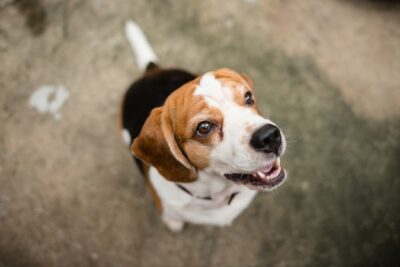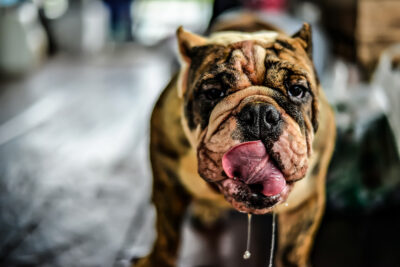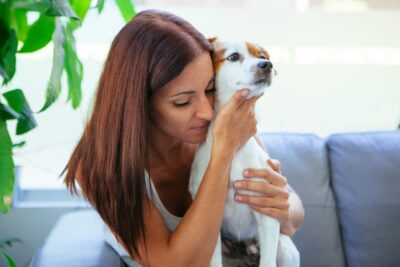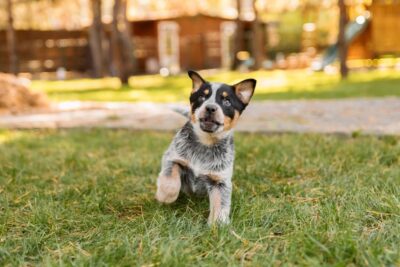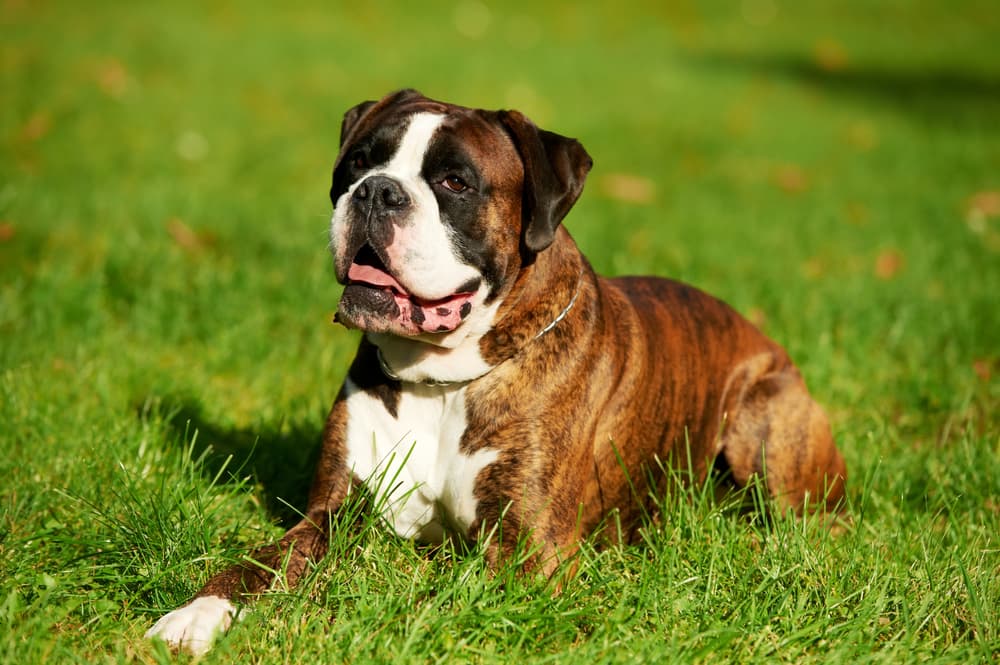Dog Hernia: Types, Symptoms and Treatment Options
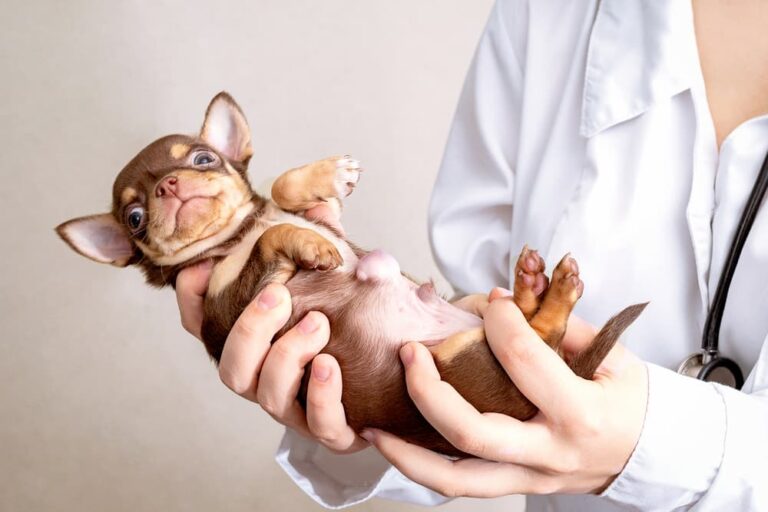
A hernia is an abnormal opening in muscle or tissue, through which organs or tissues can pass or protrude.
In humans, a hernia often refers to an abnormal body wall opening in the abdomen or groin. This opening allows tissues to protrude from the abdomen and rest under the skin.
You may be wondering, can dogs get hernias too? Read on to learn more about dog hernias, including types, causes, signs, and treatment.
Can Dogs Get Hernias?
Yes, dogs can get hernias. In fact, hernias in dogs are relatively common. They’re often diagnosed in young puppies.
The most common form of dog hernia is an umbilical hernia, which allows fat and/or abdominal organs to protrude through the umbilicus (belly button) on a puppy’s belly. Small umbilical hernias may close on their own, but veterinary care is often required.
Canine hernias are similar to human hernias, although their causes may differ.
What Does a Hernia Look Like in a Dog?
Many dog hernias can be seen and/or felt. Hernias often take the form of a soft to slightly-firm bulge, protruding from your dog’s belly, groin, or hind end. In older dogs, a hernia may be mistaken for a soft, fatty lump under the skin.
However, some hernias occur internally. These hernias involve the diaphragm instead of the external body wall, which means they cannot be seen or felt. Internal hernias require x-rays or other veterinary tests for diagnosis.
Types of Hernias in Dogs
There are several types of hernias in dogs, each with a unique cause and clinical appearance.
Umbilical hernia: Umbilical hernias in dogs occur at the umbilicus (belly button). This is the most common type of dog hernia. Many umbilical hernias are small and they may close on their own, as a puppy grows and matures. Large umbilical hernias and hernias that do not close over time, however, can cause problems and require treatment.
Inguinal hernia: Inguinal hernias affect the groin, where the inner leg meets the belly.
Perineal hernia: These hernias, which often occur in unneutered, older males, may affect one or both sides of a dog’s hind end (adjacent to the rectum).
Diaphragmatic hernia: A diaphragmatic hernia affects the diaphragm, which is the muscle that separates the chest from the abdomen. A diaphragmatic hernia can interfere with a dog’s ability to breathe. Emergency treatment is often required.
Hiatal hernia: A hiatal hernia is a small hereditary defect in the diaphragm that allows a portion of a dog’s stomach to protrude into the chest.
Spay incision hernia: When an abdominal incision does not heal properly, a hernia may occur. These hernias usually become apparent in the days or weeks immediately after surgery.
How Do Dogs Get Hernias?
Most hernias are caused by genetic or hereditary factors. These hernias are present at birth. Umbilical and hiatal hernias both fall into this category, with umbilical hernias being far more common. Umbilical hernias can occur in any breed, while hiatal hernias are most common in Bulldogs and Shar Pei dogs.
Perineal and inguinal hernias tend to occur in older dogs. Perineal hernias primarily affect intact males; they are associated with excessive straining due to an enlarged prostate gland. Age-related inguinal hernias can be associated with pregnancy, trauma, obesity, or other factors.
Diaphragmatic hernias are usually caused by blunt force trauma. Potential causes include being hit by a car, falling from a high surface, or being kicked in the abdomen. Excessive force on the abdomen leads to a tear in the diaphragm, causing significant breathing difficulties.
Incisional hernias, such as a dog spay incision hernia, form after abdominal surgery, when an incision fails to heal normally and dehisces (opens). Some incisional hernias are caused by underlying conditions that interfere with healing, while others may be associated with returning to activity too quickly.
Dog Hernia Symptoms
Hernia symptoms vary, based upon the type of hernia.
Umbilical, inguinal, and perineal hernias cause swelling at the affected area. In most cases, these swellings are soft and nonpainful. Sometimes, however, organs may become trapped or strangulated in a hernia. This causes pain, swelling, and inflammation, requiring emergency treatment.
Signs of hernias include:
- Soft, nonpainful swelling on the belly, in the groin, or near the rectum
- Painful or red swelling on the belly, in the groin, or near the rectum (with strangulation)
- Vomiting (with strangulation)
- Lethargy (with strangulation)
Diaphragmatic and hiatal hernias are not externally visible. While both of these hernias involve tissues moving into the chest, diaphragmatic hernias are typically associated with breathing difficulties and hiatal hernias are associated with gastrointestinal signs.
Signs of a diaphragmatic hernia in dogs include:
- Shortness of breath
- Increased respiratory rate
- Increased respiratory effort
- Blue gums
- Lethargy
- History of blunt force trauma
Signs of a hiatal hernia in dogs include:
- Nausea
- Vomiting
- Regurgitation
- Excessive salivation
- Breathing problems
Diagnosing Hernias in Dogs
Umbilical, perineal, and inguinal hernias can often be diagnosed on the basis of a physical examination. Your veterinarian may also recommend x-rays to confirm the diagnosis and determine whether important organs (such as intestines are bladder) are present within the hernia.
Diaphragmatic and hiatal hernias are typically diagnosed using chest x-rays. In some cases, other forms of imaging may be needed to obtain a definitive diagnosis.
Dog Hernia Treatment
Most canine hernias are treated with surgery. Some mild hiatal hernias can be managed medically, with treatments aimed at controlling the gastrointestinal signs associated with this condition, but most other hernias should be closed surgically. There are no home remedies for dog hernias.
Surgical repair of umbilical hernias is typically a relatively straightforward procedure. Surgery will likely be performed by your regular veterinarian, and is often performed at the time of a dog’s spay or neuter.
Surgery to repair a perineal or inguinal hernia in a dog can vary significantly in complexity. Simple repairs may be performed by your regular veterinarian, while complex hernia repair surgery may require referral to a veterinary surgeon.
Diaphragmatic hernias and hiatal hernias typically require referral to a veterinary surgeon. These are complex surgical procedures with heightened anesthetic risks.
Dog Hernia Surgery Cost
The cost of surgery can vary significantly, depending on the type of hernia and surgical complexity.
Adding an umbilical hernia repair to a dog’s spay or neuter surgery is often relatively inexpensive, because your dog will already be anesthetized and undergoing surgery. You can expect to pay an additional $200-$400 to have an umbilical hernia repaired at the time of your dog’s spay or neuter.
Diaphragmatic hernia repair, in contrast, requires a veterinary surgeon and can be significantly more expensive. You can expect to spend $4,000-$8,000 for your dog’s diaphragmatic hernia repair.
Dog Hernia After Surgery
Some dog hernias occur after abdominal surgery, when the body wall incision fails. Post-surgical hernias can have many causes, including delayed wound healing and high post-surgical activity levels.
You can reduce the chances of a post-surgical hernia by following your veterinarian’s instructions and limiting your dog’s activity after surgery. Limit your dog’s exercise to short leash walks only, avoiding running, jumping, and other activities. If instructed to use an e-collar (cone) to keep your dog from licking their incision, be sure to do so as directed by your veterinarian.
How to Prevent Hernias in Dogs
The majority of canine hernias are caused by genetic factors. The best way to prevent these hernias is to avoid breeding dogs with hernias and/or avoid breeding pairs that have produced puppies with hernias in the past.
If you have a male dog, you can reduce the risk of perineal hernias by having your dog neutered before middle age. You can reduce the risk of diaphragmatic hernia by keeping your dog indoors or in a fenced yard, which can reduce the risk of being hit by a car or sustaining other serious trauma.
